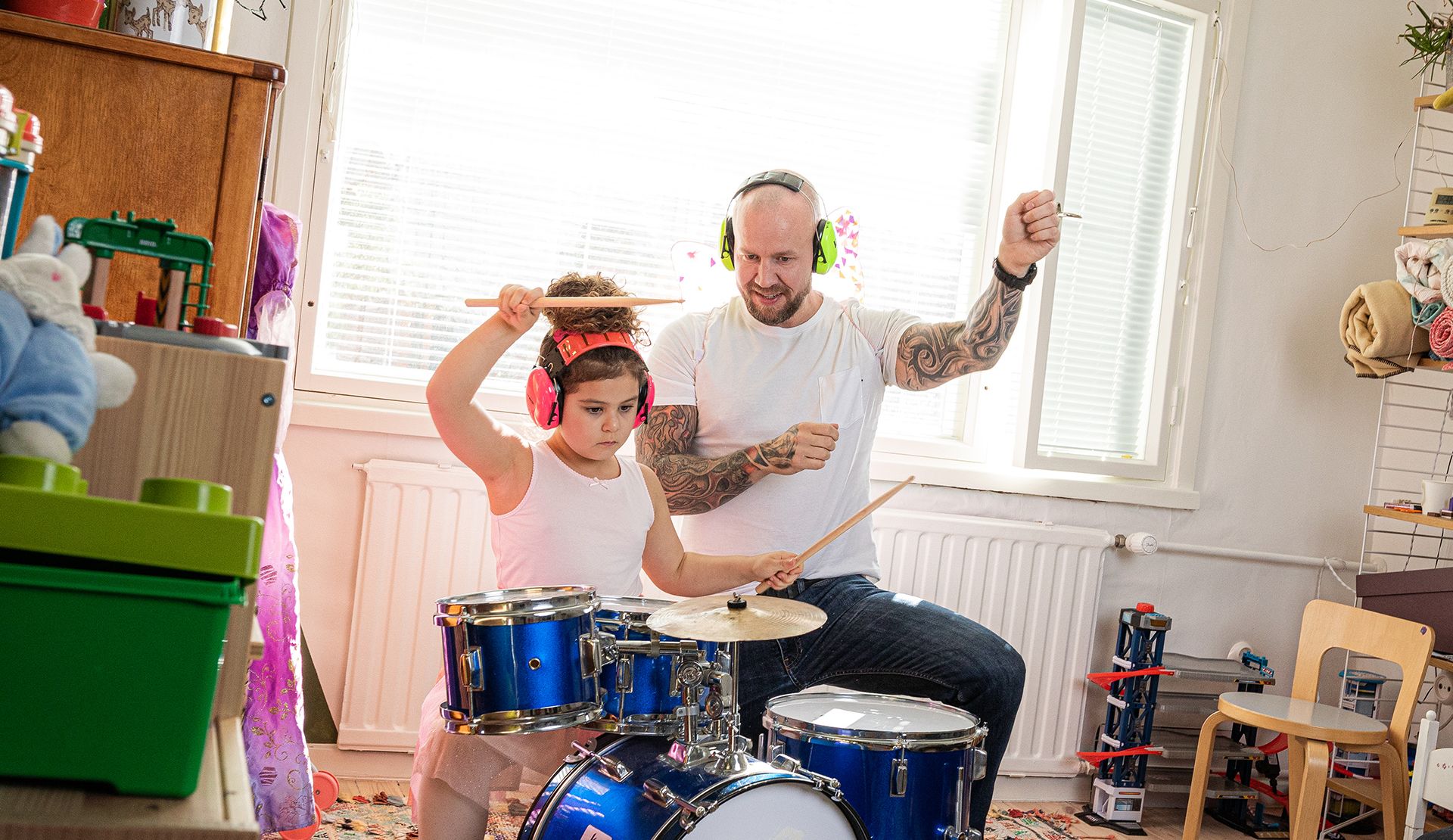
Allergies
Revised 5/4/2022
Determining the cause of an allergy is always important.
If you suspect an allergy, ask our specialists for help and, if necessary, get tested for allergies. An allergy test helps to accurately identify allergens, making it possible to find the right treatment and enjoy a better quality of life.
Allergic symptoms
Allergic symptoms vary depending on the allergy. Allergies are divided into rapid onset and slow onset allergies according to how quickly the allergic symptoms occur. For example, if the symptoms occur during pollen season, it can indicate a pollen allergy or asthma, which can be diagnosed more accurately with allergy tests and pulmonary function tests.
The most common allergic symptoms include:
- Respiratory symptoms: sneezing, a runny nose, shortness of breath.
- Skin symptoms: itching, redness, rashes.
- Eye symptoms: itchy eyes, redness, watery eyes.
- Stomach symptoms: nausea, abdominal pain.
At worst, an allergic reaction can cause an anaphylactic reaction, which is severe and requires immediate first aid and hospital treatment. Anaphylactic shock results in breathing difficulties, a drop in blood pressure and disruptions of heart functions.
See a doctor promptly if you experience any of the following allergy symptoms:
- Difficult-to-treat rash
- Strong reaction to a food
- Shortness of breath and other severe reactions
Allergy treatment
Allergic symptoms can be relieved effectively by avoiding exposure to the allergens or taking appropriate medication for the symptoms. Mild allergic reactions can be treated with antihistamine, while more severe reactions may require cortisone treatment. The emergency treatment for the most severe allergic symptoms is adrenaline.
Allergen immunotherapy can improve tolerance, relieving most allergic symptoms effectively for a long time.
| Service | Price |
|---|---|
| Extended basic allergy screening and analysis test panel The test panel includes the basic screening and analysis of dust, pollen, dander and food groups. The dust, pollen and dander screening panel includes allergy tests for birch, timothy grass, mugwort, cat, dog, horse, outdoor mould and dust mites. The food screening covers egg whites, milk, wheat, cod, soy and peanuts. | 204,70 € No Kela reimbursement |
| Prostate test Stockholm3 (Pt-Sthlm3) The Stockholm3 test includes the collection and analysis of blood samples at the Mehiläinen location of your choice as well as the delivery of the results. Book an appointment for the test | 383,20 € No Kela reimbursement |
| Pharmacogenetic panel laboratory test The package covers 29 gene tests: ABCB1, ABCG2, ALDH2, BCHE, CACNA1S, CYP1A2, CYP2B6, CYP2C_rs12777823, CYP2C19, CYP2C8, CYP2C9, CYP2D6, CYP3A4, CYP3A5, CYP4F2, DPYD, F2, F5, G6PD, GRIK4, IFNL3, MTHFR, NAT2, NFIB, NUDT15, SLCO1B1, TPMT, UGT1A1 and VKORC1. | 389,00 € No Kela reimbursement |
| Huoleton health check Huoleton health checkup includes laboratory tests, a nurse's appointment and a personal plan. | 169,00 € No Kela reimbursement |
| Liver function The package covers: B-PVK+T, P-GT, P-ALAT, P-Bil, S-CDT, P-TT, total cholesterol, HDL, Non-HDL, LDL and triglycerides. | 312,20 € No Kela reimbursement |
| Metabolic syndrome The package covers: fP-Gluk, U-Alb/krea, P-Uraat, P-ALAT, fS-LipoA1, fS-LipoB, fS-ApoB/A1, total cholesterol, HDL, Non-HDL, LDL and triglycerides. | 333,20 € No Kela reimbursement |
| Health examination for men over 50 The health examination includes a comprehensive laboratory package. Read more (in Finnish). | 249,00 € No Kela reimbursement |
| Health examination for women over 50 The health examination includes a comprehensive laboratory package. Read more (in Finnish). | 239,00 € No Kela reimbursement |
| The nut screening and components test package The test package covers the IgE antibodies of five varieties of nuts (peanut, hazelnut, walnut, Brazil nut and cashew). | 143,90 € No Kela reimbursement |
| Food group, diff. count and components test package The test package covers the IgE antibodies of the most common allergens causing food allergies (egg white, dairy, wheat, cod, soy and peanuts). | 143,90 € No Kela reimbursement |
| STD package 1 Includes the following tests: Chlamydia and gonorrhea (U-CtGcNhO), HIV (S-HIVAgAb) and syphilis (S-TrpaAb). | 242,40 € No Kela reimbursement |
| STD package 2 Includes the following tests: Chlamydia and gonorrhea (U-CtGcNhO), HIV (S-HIVAgAb), syphilis (S-TrpaAb), hepatitis B (S-HBsAg) and hepatitis C (S-HCVAb). | 415,60 € No Kela reimbursement |
| Cardiac and diabetes risk test Hertta (Pt-Cert) Learn more about the Hertta risk test. Book an appointment | 182,30 € No Kela reimbursement |
| Athlete's laboratory package The package covers: basic blood count (PVKT), ferritin to measure iron stores and resting electrocardiogram (ECG). | 165,50 € No Kela reimbursement |
| Blood Pressure & Heart laboratory package Includes the following tests: basic blood count (PVKT), blood fat values (total cholesterol, LDL and HDL cholesterol, triglycerides), apolipoproteins (ApoB and ApoA1), sensitive CRP (hS-CRP), long-term blood sugar (HbA1c), alanine aminotransferase (ALT) , sodium (Na), potassium (K), creatinine (Krea), thyroid test (TSH), urine chemical screening (U-kemSeula), and resting heart film (EKG). | 575,20 € No Kela reimbursement |
Paediatric allergies
Children experience different allergic symptoms depending on their age. For example, a child may have atopic eczema already in the very first months of their life. In order to avoid the child having any allergic reactions, adults should be aware of their own allergies as well as their child's allergies.

Digital Clinic provides help with allergic symptoms
Digital Clinic's remote doctor's appointments can be used to treat allergic symptoms that do not require a physical examination. You can get help with symptoms such as allergic rhinitis or symptoms of pollen allergy.

Frequently asked questions about allergies
An allergy means that the body has antibodies or sensitised white blood cells that target an allergen. Allergies are divided into rapid onset and slow onset allergies according to how quickly the allergic symptoms occur.
Identifying your allergy is important if you have symptoms you don't know the cause of.
- No symptoms or the cause of mild symptoms is clear: If you do not have allergic symptoms or the cause of the symptoms is clear, you do not need to be tested for allergies. For example, you have itchy eyes in the spring due to birch pollen.
- Unclear symptoms: If you have symptoms that you don't know the cause of, such as a recurrent runny nose, itching, hives or asthma, it's a good idea to find out whether you have an allergy.
- Severe symptoms: If your symptoms are particularly severe, you should try to find out whether you have an allergy.
Almost anything can cause an allergic reaction. The most common causes of allergies include:
- Pollen, such as birch and hay
- Animal dander
- Dust mites
- Certain foods, such as nuts, fruits, shellfish, eggs and cow's milk
Allergies to medications, nickel and natural rubber, i.e. latex, are also common.
A previous allergic rhinitis can increase the risk of developing asthma, and untreated allergic symptoms often also worsen asthma symptoms. For this reason, mild allergic symptoms should also be treated.
Allergen immunotherapy is carried out as an injection or sublingual tablet treatment, especially for the treatment of pollen, animal dander, dust mite and hymenoptera venom allergies. Allergen immunotherapy not only relieves allergy symptoms, but can also be used to, at best, cure an allergy.
